#lowcountry house
Text

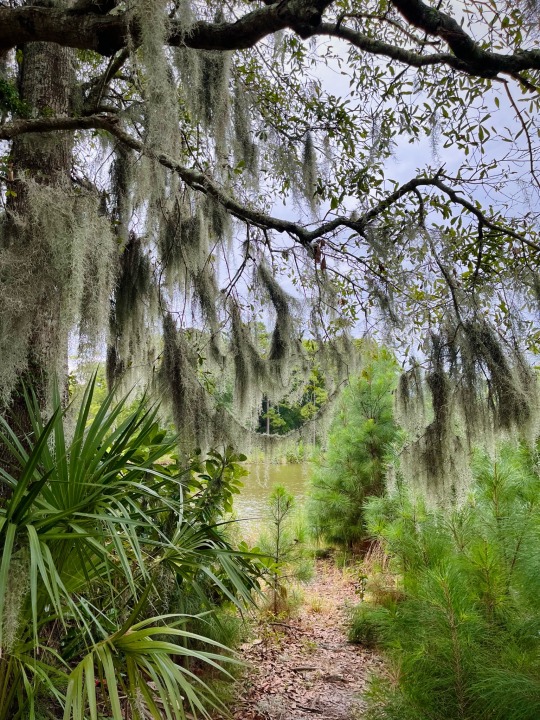
This trail is directly out my back door at my new apartment. I use to walk and bike this all the time. If I turn the other direction, I am 1 mile from the ocean. Everything is back to normal again.
#and this time I’m not living at my parents house#I made it by myself 🎊#nature#marsh#swamp#swampcore#coastal#Lowcountry#southern gothic#outdoors#adventure#adventurecore#naturecore#photography#nature photography#green#swamp aesthetic#dm me#me#message me#dms#let’s talk#hiking#new mutuals#let’s be mutuals#let’s be friends
15 notes
·
View notes
Text



Lemon-LaBruce House, Pawleys Island, SC; built 1898
#pawleysisland#Pawleys island#Pawleys#South Carolina#South Carolina coast#lowcountry#old homes#beach#beachstyle#beaches#beachliving#beach house#beachscape#island#islands#coast#coastal#Atlantic ocean#preppy
10 notes
·
View notes
Text

this pier is gone now
Folly Beach, 2018 photo by me @gwenllian-in-the-abbey
#they knocked it down and put up a concrete monstrosity#rip wooden pier#even the wooden one didn't exist when i was a kid though#rip atlantic house#black and white photography#geometric art#seascape#my photography#lowcountry#folly beach#south carolina
6 notes
·
View notes
Photo
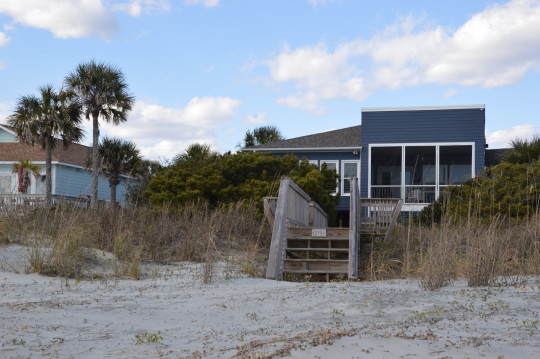

House on Folly
Folly Beach, SC. January 2021. Photo by M. Lucero.
#folly beach#south carolina#sc#lowcountry#southern#beach#beach house#sand#photo#photography#photographers on tumblr#photography on tumblr#2021#original photography
2 notes
·
View notes
Text
Transitional Exterior - Exterior
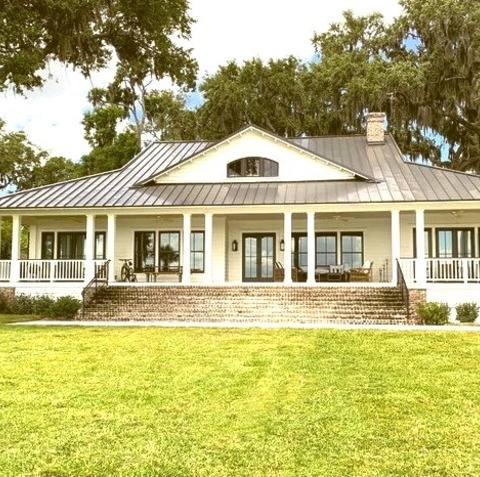
An illustration of a medium-sized transitional white one-story exterior home design made of concrete fiberboard and covered with metal.
0 notes
Text

SWRE Podcasts Bluffton South Carolina Lowcountry USA
#TheVoicesofBlufftonSCRealEstate#podcast#realestatepodcast#toppodcast#realestateagentpodcast#SteveWallaceRealEstate#SWRE#BeaufortCounty#JasperCounty#SouthCarolina#Lowcountry#USA#homes#media#realestate#news#realestatemarket#housing#propertylisting#propertyforsale#coastal#properties#Bluffton#HiltonHeadIsland#LatitudeMargaritavilleHiltonHead#SunCityHiltonHead#retirement#southernliving#homebuyingtips#letstalkrealestate
0 notes
Text
Hi. I exist.
Ello. I'm a Pinterest convert who happened to join at the same time as the great Reddit migration, so that's fun. Anyways, figured I'd make a post to give people some info about me.
I'm in a large number of fandoms, including (DEEP INHALE), SCP Foundation, Wanderer's Library, The Owl House, Gravity Falls, Amphibia, Generation Loss, Murder Drones, Marvel, Star Wars (Somewhat), FNAF, DnD, Wings of Fire, Percy Jackson universe, Grishaverse, The Dragon Prince, Nimona, The Hunger Games, and probably some other I forgot to mention.
I'm also a bit of a nerd and hyperfixiate on both fictional and nonfictional things, I know wayyyyy too much about things like Chernobyl and Plague Doctors. I also sometimes write as a hobby and am learning how to art, still kinda figuring it out though. Due to the writing thing, I know a lot of incredibly random facts that I shouldn't, as well as just random science stuff.
I like helping people, so don't be afraid to reach out with questions or concerns if you need help with something. If you want info on things, I'm more than happy to help. Here's some things I know a lot about:
The Black Death, Plague Doctors, Chernobyl, oddly specific horrific events in history, the fandoms I've listed above, the lowcountry region of USA (Southeastern coast, I live in South Carolina about 15 minutes from the beach) and the ecosystem of said area (Marshes, swamps, beaches, and our temperate forests), mythology (Greek, Roman, Egyptian, and some Norse), SCIENCE, and other things I'm probably forgetting.
Seriously gimme asks I wanna be a living encyclopedia.
For writing, I mainly like to do fantasy, some sci-fi, and a bit of horror. I'm far from consistent with when I write, you know how it is with motivation.
This IS a safe space blog for LGBTQIA+ people. I don't care if you're straight, gay, lesbian, bi, pan, omni, somewhere else on the spectrum, like asexuals, aromantics, and aroaces, or maybe you're enby, or maybe you're trans or genderfluid, or something else I forgot to mention. I do not care. You are all welcome here, my only DNIs are if you're going to be rude. One of my mottos is "I'll respect your opinion as long as your opinion doesn't disrespect anyone else's existence or rights."
I sorta use a persona for some areas of Tumblr, such as Wizardblr, so here's a reference for that:
Name: Dr. Corvius (Will respond to Doc, Doctor, and Crow), Official Title is "Corvius The Plagued."
Appearance: Dr. Corvius appears human at first glance when wearing full attire, but this is not the case. They are actually an avian, with feathers covering most of their body and rough, scaled skin similar to that of bird feet covering their hands, forearms, lower legs, and their feet. Their fingers have short claws on the ends, and their feet are structured like that of a crow. They don't wear shoes, as their feet are not well shaped to even wear them, and they frequently perch on branches and the like, which is far easier with their talons exposed. They do have wings, and usually will tuck these in under their mantle, giving the appearance of a feathered cape. They wear the outfit of a plague doctor, with a long black robe, mask, and other accessories, including a pouch of supplies. They also carry around a plague doctor stick, which doubles as an arcane focus. Under their plague doctor mask, they have an actual beak. (Essentially just take a Kenku from DnD and give it wings, and a plague doctor outfit.)
Abilities: They are a magic practitioner, specializing in necromancy, alchemy, chaos magic, and experimentation. She is also good with medicine, and despite not being licensed in any way, is incredibly good at healing people. Birds, specifically corvids, seem to follow them around, and will obey their commands. Their "flock" consists mostly of crows and ravens, but has a few magpies and rooks as well. This Flock is actually tied to her, so protection spells and immunities that she has extend to them. They can make noises like that of corvids, allowing for communication with their flock, and can also mimic sounds.
Behavior: They are generally a wise and intelligent person, taking the logical approach to things. They are kind, and are always willing to lend a helping hand.
Background: [ERROR: DATA LOST]
(The persona reference is a WIP im writing this late at night and I gotta go to sleep, I'll finish it later.)
(Contact me if you want an autopsy or reanimation done)
Ok byeeeeeeeee

Stealing these crows from this post
#informative#about me#hi hello#fandom#plague doctor#wizardblr#lgbtq safe space#lgbt safe space#safe space#lgbtqia+#gimme asks#ADHD
90 notes
·
View notes
Text
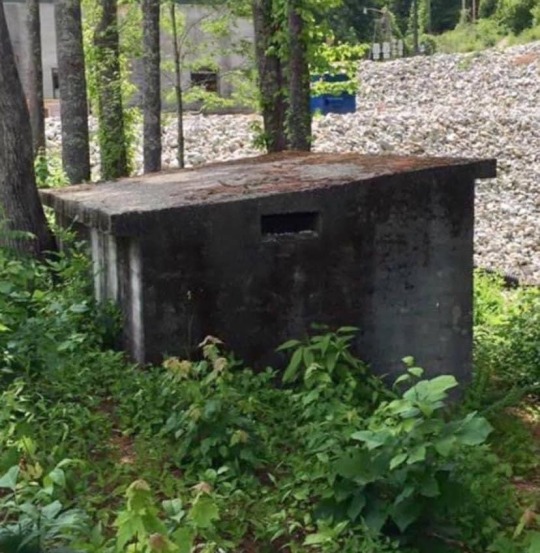


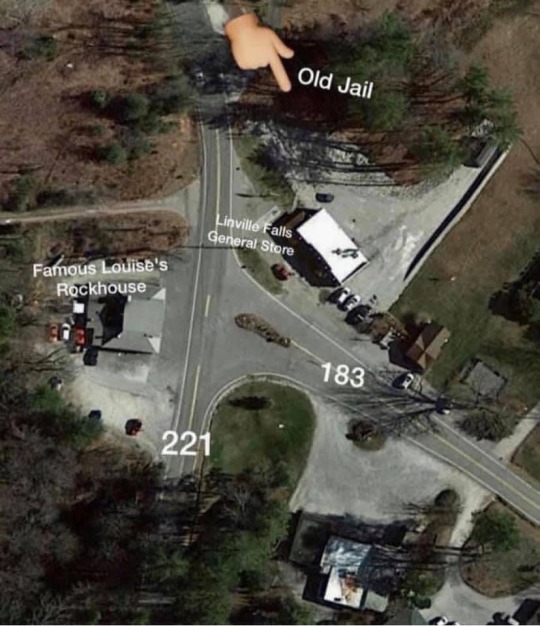
Old Jailhouse - This jail served as a holding cell for McDowell, Avery, and Burke Counties. It is actually still there and you can visit it! Located in the Linville Falls Community in North Carolina on Hwy 221 North, it is behind the Linville Falls General Store and across from Famous Louises Restaurant. Stop by the general store and while you’re there, check it out!
The History of the Jailhouse:
The community of Linville Falls is located at an attitude of around 3000 feet and is noted for its cool, pleasant summers. The climate offered an escape from mosquito borne fevers of the Lowcountry of the Carolinas and brought many tourists to spend summers there. Three boarding houses opened their doors.
About 1935, John Wiseman built a large side porch on his store and began having square dances. Soon three beer joints and two dance halls sprang up. People from all adjoining counties flocked in for fun and entertainment. White liquor had always been available. Soon, public drunkenness and fistfights became common.
“There was a bunch of boys from Spruce Pine always wanting trouble” said one old timer, “and another bunch from Avery just waiting for trouble to happen. The guys from McDowell and Burke had to take care of things no doubt.” So Linville Falls became another “Dodge City”.
“One night I counted 10 pistols being carried. Trouble was brewing. The bartender suddenly pulled out a 38 and laid it on the bar,” remembers a friend.
“Another time,” my friend remembers, “The biggest guy I’ve ever seen came up. Where is all the mean fellas I’ve been hearing about?” he asked. “I don’t know where they are replied one bystander, “but will I do ‘til they get here?” With that, a battle was on.
Law enforcement officers had their hands full so Burke County built a small jail. This jail served as a holding room for all three counties. At the end of the night, each county loaded its share of the offenders and transported them to respective jails.
This jail is still there!
(Photos by Kim Wright. Written by Bobby Jean English from the McDowell Heritage Book)
#appalachian#appalachian mountains#north carolina#appalachian culture#western north carolina#appalachia#the south#nc mountains#mcdowell county#mcdowellcounty#linville north carolina#avery county nc#burke county
8 notes
·
View notes
Photo

RECIPE: Creole Shrimp (from Gullah Geechee Home Cooking by Emily Meggett)
In South Louisiana, many dishes use what’s called the “holy trinity.” The holy trinity—onion, bell pepper, and celery—is a big part of Cajun cuisine and Louisiana creole cooking. My creole shrimp use this holy trinity, and like many creole dishes, the herb smell that fills the kitchen during cooking is just as wonderful as the taste of the shrimp once they reach the plate. The bacon adds a rich, crispy texture, while the tomatoes serve as the fresh base for this wonderful sauce. Shrimp cooks quickly, so be careful to sauté only until pink. Serve creole shrimp over a bed of white rice.
Serves: 4 to 6
5 slices bacon
1 large onion, finely chopped
1 bell pepper, finely chopped
1 cup (100 g) diced celery
2 garlic cloves, finely chopped
10 small tomatoes (2 pounds/910 g), peeled and diced
2 teaspoons sugar
¼ cup (½ stick/55 g) unsalted butter
2 pounds (910 g) shrimp, peeled and deveined
Seasoning salt, preferably
Gold Medal, to taste
Cooked long-grain white rice, for serving
In a 10-inch (25 cm) cast-iron skillet, cook the bacon over medium-high heat until crisp. Remove from the heat and let cool. Cut the cooled bacon into small pieces. Set aside.
In the skillet, cook the onion, bell pepper, celery, garlic, tomatoes, and sugar for at least 1½ hours over low heat. This mixture needs to “cook down,” which means that the sauce needs to thicken and shrink. The consistency should be a thick sauce, similar to a spaghetti sauce.
About 5 minutes before the mixture finishes cooking, melt the butter in a small skillet. Add the shrimp and cook over medium heat until pink, 1 to 2 minutes.
Drain the shrimp. Add the shrimp and cooked bacon to the tomato mixture. Add Gold Medal seasoning salt. Taste, and add more as needed. Stir, and serve over white rice.

A NEW YORK TIMES BESTSELLER
NAMED A BEST BOOK OF THE YEAR BY NPR
This is the first major Gullah Geechee cookbook: Emily Meggett, the matriarch of Edisto Island, shares the recipes and the history of an essential American community
The history of the Gullah and Geechee people stretches back centuries, when enslaved members of this community were historically isolated from the rest of the South because of their location on the Sea Islands of coastal South Carolina and Georgia. Today, this Lowcountry community represents the most direct living link to the traditional culture, language, and foodways of their West African ancestors.
Gullah Geechee Home Cooking, written by Emily Meggett, the matriarch of Edisto Island, is the preeminent Gullah cookbook. At 89 years old, and with more than 50 grandchildren and great-grandchildren, Meggett is a respected elder in the Gullah community of South Carolina. She has lived on the island all her life, and even at her age, still cooks for hundreds of people out of her hallowed home kitchen. Her house is a place of pilgrimage for anyone with an interest in Gullah Geechee food. Meggett’s Gullah food is rich and flavorful, though it is also often lighter and more seasonal than other types of Southern cooking. Heirloom rice, fresh-caught seafood, local game, and vegetables are key to her recipes for regional delicacies like fried oysters, collard greens, and stone-ground grits. This cookbook includes not only delicious and accessible recipes, but also snippets of the Meggett family history on Edisto Island, which stretches back into the 19th century. Rich in both flavor and history, Meggett’s Gullah Geechee Home Cooking is a testament to the syncretism of West African and American cultures that makes her home of Edisto Island so unique.
For more information, click here.
#abramsbooks#abrams books#gullah geechee#gullah geechee home cooking#gullah geechee food#emily meggett#creole shrimp#lowcountry#south carolina#gullah geechee cookbook#gullah cookbook#recipe#free recipe
60 notes
·
View notes
Text
Okay- as to the possibility of John Laurens meeting Peter Lavien, this is super messy and it’s impossible to prove without a primary source explicitly stating that they interacted, but I can put the timeline together for you that explains how they would’ve been in the same area at the same time.
The summary is this:
- Sometime between 1764 and 1766, Peter Lavien settled in Beaufort, SC, and became a partner with Captain Samuel Grove, running his shop in downtown Beaufort along with an apprentice/clerk named John Kean. They became one of the most successful import/export houses in the area during an indigo boom.
- When the Revolution started stirring up trade restrictions, Lavien took to smuggling and, in 1776, he had a ship detained in Savannah with its cargo. He appealed to the South Carolina Council of Safety which was chaired by Henry Laurens at the time. His son in law, John Charles Lucena, had connections to a merchant in Savannah that was able to vouch for his ship and get it released.
- In 1777, Peter Lavien moved his family to Savannah for business and to avoid patches of violence that broke out around the lowcountry. He left his properties in Beaufort to be managed by John Kean in his absence.
- Fast forward to 1779, Laurens joined up with the southern army at Tillifiny Hill in May and volunteered to escort General Moultrie’s rear guard across the Coosawatchie River. He engaged the enemy in an ill-advised assault and was routed back across the river. If you’re interested in the archeological effort to pinpoint the exact location of the engagement.
- The nearest major town was Beaufort, about 15 miles away where John Kean was incidentally still located, serving as deputy paymaster of the South Carolina Militia.
- Peter Lavien’s name would’ve been well-known in the area and his move to Savannah would’ve been common local knowledge. Laurens would have likely interacted with John Kean at some point while commanding a militia battalion, and it’s possible that Kean would have known that Lavien was Hamilton’s older brother if Lavien ever spoke about it to him. So, there’s a possibility that Laurens learned Kean’s former-employer’s relationship to Alexander Hamilton and knew that he’d moved to Savannah.
- Whether Laurens made the effort or had the time to seek Peter Lavien out while he was in the vicinity of Savannah that autumn is entirely speculation. But, we do know that Lavien left a small sum of money to his brothers in his will before he died just a year later.
Extended timeline details and sources under the cut.
These points are all from:
1. Chernow’s Alexander Hamilton
2. Greg Massey’s John Laurens and the American Revolution
3. Rowland, Moore, and Rogers’ History of Beaufort County V.1
“In 1745, the ill-fated wedding [between Rachel Faucette and Johann Lavien took place at the Grange. The newlyweds set up house on their own modest plantation, which was named, with macabre irony, Contentment. The following year, the teenage bride gave birth to a son, Peter, destined to be her one legitimate child.” (1. pg 11)
In 1750, Johann Michael Lavien, Peter’s father, had Rachel imprisoned for adultery and no longer residing with him. She was sent to Christiansvaern, the local fort and imprisoned for 3-5 months. She left Christensted when she got out, leaving Johann and Peter behind and going to St. Kitts where she started living with James Hamilton. (1. pg 11-12)
On February 26, 1759, Johann Lavien sent Rachel an official divorce summons for absenting herself which she attended and they were officially divorced on June 25th. Johann was allowed to remarry and Rachel strictly prohibited, denying her any of the property he’d mostly gained in marrying her, and preventing her “whore-children” from getting any in the event of his death. Peter would’ve been 13, James 6, and Alexander either 2 or 4. (1. pg 20)
Early 1760s, Johann and Peter moved to Frederiksted on the far side of St Croix. (1. pg 21)
April 1765, James Hamilton, Rachel and their kids moved to Christiansted where James was working as a clerk for Archibald Ingram of St Kitts, the son of a Glasgow “tobacco lord”- a family connection, tasked to collect a debt from a man named Alexander Moir. The case lasted until January 1766, then James pulled anchor and disappeared around Alex’s 11th birthday. (1. pg 21)
Between 1764 and 1766, Peter settled in Beaufort, SC, and became the shop manager of a store owned by Captain Samuel Grove in Beaufort bay on Tradd Street selling rum, sugar, chocolate, coffee, tea, and wine, all imported on his schooner Hannah and Betsy. John Kean was his apprentice. (3. pg 244)
“November 1769...Peter returned to St Croix to take possession of his small inheritance- an injustice that rankled Alexander for many years. Peter had fared sufficiently well in Beaufort, South Carolina- named a church warden- the chief financial and administrative officer- in St Helena’s Parish the previous year, yet he couldn’t spare a penny for the two destitute half brothers orphaned by his mothers death.” (1. pg 25)
Early 1770s, Peter Lavien and Samuel Grove were considered the largest indigo shippers in the Beaufort District. The Revolution disrupted the firm’s trade and Samuel Grove died at sea in 1775. (3. pg 244)
On 30 January 1776, one of Peter Lavien’s partner ships the William was detained in Savannah for smuggling. Lavien appealed to the South Carolina Council of Safety (chaired by Henry Laurens) to release the brigantine with 122 casks of indigo and 100 barrels of rice on board. The Council of Safety refused and ordered the cargo detained in Beaufort. On February 1, 1776, Quinton Pooler, a Savannah merchant who Peter’s son-in-law, John Charles Lucena had connections to, claimed the cargo belonged to him, and the captain of the William produced authorization for departure from the Georgia Council of Safety. The vessel sailed and a frustrated Henry Laurens, obviously not convinced, warned the Georgia council that they should “obey the laws of Congress”. (3. pg 206-207)
“Family business connections, and political hostility, forced Lavien to move to Savannah in 1777. There he lived with his daughter Joanna, and his son-in-law, John Charles Lucena, until his death in 1781.” (3. pg 244)
“Lavien left his Beaufort property in the hands of his former partner’s stepson, John Kean, who was a consistent patriot and a member of Beaufort’s local committee. Lavien’s will divided his large estate between the Lucenas of Savannah and John Kean of Beaufort. The Lucenas remained loyal to the crown, and most of their Georgia property was confiscated; Kean served as deputy paymaster of the South Carolina militia, along with John Mark Verdier. Both served under Daniel DeSaussure, who was paymaster general of the South Carolina Militia. (3. pg 244)
May 1, 1779- Laurens arrived in General Moultrie’s camp at Tullifiny Hill. On May 3rd, he volunteered to take 250 militia troops to escort Moultrie’s rear guard back to the army at Tullifiny Hill and instead tried to lead an assault across the Coosawhatchie River, failing and risking about a third of Moultrie’s force. (2. pg 135)
#Peter Lavien#Laurens in the lowcountry#< that'll be a new tag#timeline#Historical Hamilton#I don't have the energy to format this better#just putting the thought out there
50 notes
·
View notes
Text
Genealogy Sites
This is a list of all the sites that I’ve used to research my family history. Some of these sites may be state specific (Carolinas) but most of them include information from through the country. I will continue to update the list as time goes on 🤌🏾
Slave Narratives (I was able to find one of my ancestors through this, they were interviewed) https://www.loc.gov/collections/slave-narratives-from-the-federal-writers-project-1936-to-1938/about-this-collection/
Slave Voyages (If you would like to get information on the slave ships, ports, and possibly markets) https://www.slavevoyages.org/
Lowcountry Africana (lists the names of freedmen and their counties, this is focusing on the state of South Carolina) https://lowcountryafricana.com/
South Carolina Plantations (lists the plantations owned throughout the state, some have more information) https://south-carolina-plantations.com/
Race and Slavery Petitions (legal documents concerning slaves, free people of color, and white people) https://dlas.uncg.edu/petitions/
Fold3 (military related records) https://www.googleadservices.com/pagead/aclk?sa=L&ai=DChcSEwjzyemb27P-AhXHFdQBHdQhAKcYABAAGgJvYQ&ae=2&ohost=www.google.com&cid=CAESa-D22pb5Baezi2zOQjbzS8dX8mAHU3FYMHV7nDM6hDG-QfuJjyvM5UhkOdqQKmnYkPmOw4WLqYwmNPsmIEkWhD537b9hOSATv7xHExAvsLnbo8ak8vURfKWQgQjP1ngE1JDxgkvDP0TPPzZl&sig=AOD64_2CatEJVnBDXpyjDm9G2h0saZZ9tw&q&adurl&ved=2ahUKEwjOkdyb27P-AhVymGoFHWKhA4EQ0Qx6BAgGEAE
Plantations of North Carolina (list of plantations throughout the state split into counties) https://www.ncgenweb.us/ncstate/plantations/nc_plantations.html
#black spiritualist#african american culture#black spiritualism#hoodoo tumblr#hoodoo#african american spirituality#black genealogy#black history
22 notes
·
View notes
Text



I’ve been lucky enough in my life to see and explore areas that are not easily accessible to the public along the SC Coast. Especially along the upper Lowcountry in Georgetown, along the Winyah Bay and North Inlet. I’ve explored the Carolina Bay areas in upper Charleston County and so on.
As a kid, I often accessed the islands on my dad’s old little john boat. Nothing special - just a lot of knowledge passed down on how to get “there”. I grew up visiting places that felt truly still wild. Such a large portion of the SC coast is hidden and inaccessible by a car. Or… like today, accessible by car and a long walk, but the road there is kept behind a gate.
Like I said, I find myself becoming luckier and I gain access to more keys to unlock this beautiful coast I love. Then I get to share it here, with you.
THIS South Carolina is something special. If you’ve ever been lucky enough to see it, it stays with you, and at least for me, I can never get enough.
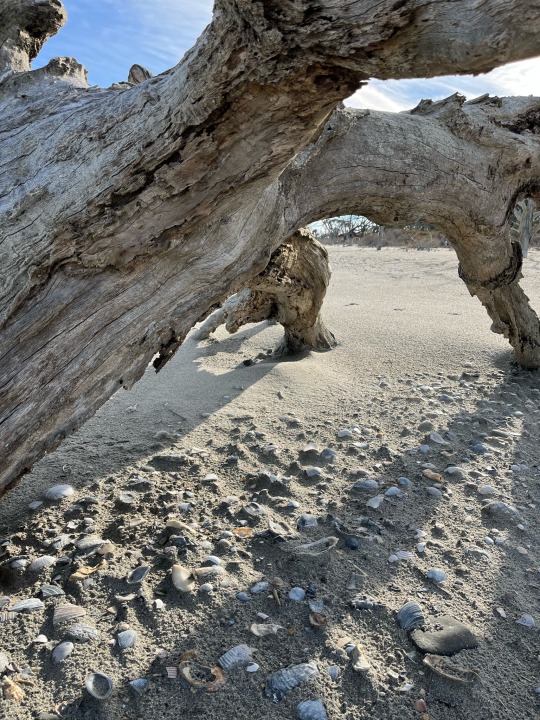
The stories of how I get these keys are a whole other thing itself, you’d have to ask to hear those stories. Today, I walked along the beach that stretches along the North Inlet. You can view a stretch of it from an immaculate house at the end of the gated and closed off community. An uninterrupted view of nature as far as the eye can see.
I wouldn’t mind doing the dishes with this view -
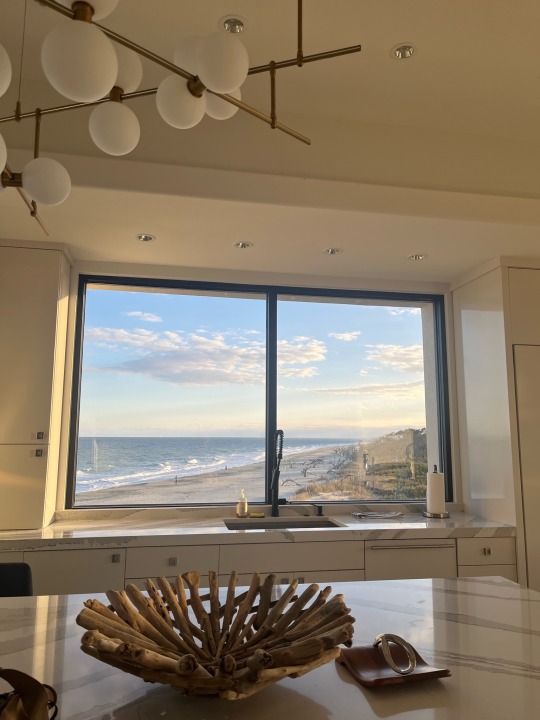
Today, I parked under this house (with permission) and started walking. You can tell this place rarely has visitors. Huge shells line the shore. The sand only moves by the wind, and my footsteps were the only ones I could see. The only evidence of visitors are the conch shells that hang on the drift wood.


I only explored about 3/4 of a mile of this stretch today, but I plan on taking a lot more time one weekend. It’s no wonder why I’m so connected to this place. It’s no wonder why I couldn’t stay far away.
#outdoors#nature#adventure#explore#South Carolina#Carolina#Carolina bags#bay#coastal#beach aesthetic#lowcountry#inlet#georgetown#sea shell#wilderness#wild#palm trees#dm me#me#message me#dms#photography#hiking#let’s be friends#let’s be mutuals#adventurecore#naturecore#beachcore#writing#writeblr
16 notes
·
View notes
Text
Bottle Trees & How To Make One & How To Know If You Cought One?

Have you ever been driving through Louisiana, or any other southern states, and noticed a tree with colored bottles either hanging from it or stuck onto their branches? Natives of Africa have hung hand-blown glass on huts and trees to ward off evil spirits ( negative energy) since the ninth century, and maybe even earlier.
The Legend is told that the spirits are attracted to the sparkling color of the bottles, blue ones seemingly more enticing to spirits. The moaning sound that the bottles make by the wind is proof that a spirit ( Negative Spirit Energy) is trapped within.
Where Did Bottle Trees Originate:
Bottle trees originated in the Congo of West Africa and date back to at least the ninth century. Very soon after European colonizers noticed the practice in Africa, bottle trees were also observed in the Caribbean in Black communities comprised of people brought there from West Africa via the trans-Atlantic slave trade. Bottle Trees are traditional for a African Diasporic religion or practice like voodoo or hoodoo.
These early accounts the bottle trees were used to ward off a variety of dangers that could destroy a home, such as thieves, evil spells and bad spirits. If you hung bones and bottles in your mango tree, for instance, thieves wouldn't touch the fruit. Basically seeing the tree like this and not knowing what it is we're scared a person off the property.

Hoodoo and the Tradition of Bottle Trees:
Bottle trees are a practice in Hoodoo. The idea behind bottle trees in the Hoodoo tradition is that the world is full of marauding spirits, usually up to no good. In the south of of Louisiana where I'm at, we believe they can enter your house if you're not careful, wreaking havoc — However, these evil spirits are very interested in spangly glass bottles. If you hang them on trees outside your house, the spirits will check the bottle out and become trapped inside, and in the morning when the sun comes up, they will be destroyed in the bottle by the sunlight.
If you're not sure the light of day has really done its job, you can cork the bottle, take it to the river and throw it in the water. A bad spirit (Haint) has no chance against the river because, according to legend, they absolutely hate water. (In mist religions dark energies and or spirits don't like nor can cross running water)
What Are Haunts? Now you herd me mentioned the world Haint. A haint is a restless ghost (spirit) who has not left the world, but has remained behind to haunt the living with trickery that is most often harmless, but there are some that can be more sinister in nature. Due to the vengeful and tricky its intentions of haunts, warding them off is understandably a priority. Hoodoo, sometimes referred to as rootwork, conjure or even lowcountry voodoo, would offer protection from evil. But at night, the boo hag would shed the skin and go looking for a victim to "ride," depleting the victim's energy or possibly even suffocating them.
Make Your Own Bottle Tree:
Turn a tree in your yard into one. The bottle should be placed upside down with the mouth of the bottle facing the trunk. You can also hang them from branches.
Where can I get a bottle? Bud Light platinum bottle is the haint blue.
Do I Need It In A Tree? No you can have in a bush well. Some also place them on the ground.
How Do I Know If I Caught One? The bottom will tip over or you can light a incense around it and if the smoke flows into the bottom you cought one.
Bottle Trees Are Used to Honor the Dead:
Bottle trees also have a special connection to the venerated dead. " The distinctive blue bottles were placed on tree limbs to capture the energy, spirit and memories of ancestors." Important and beloved relatives and community members and when they died, their tombs would be marked with large bottle trees, all sorts of vessels — bowls, cups, bottles, pots and pans — as well as knives, forks and bracelets.
How Do I Know If I Caught One?
You will here a whistle sound like the wind blowing into it.
The bottom will tip over.
You can light a incense around it and if the smoke flows into the bottom you cought one.
#Bottle Tree#Haints#Traditional Hoodoo#Voodoo#Bluebottles#Boo hags#Southern magic#Protection bottles#Blue bottles#Traditional#Rootwork#Conjure#Hoodoo bottle#Southern hoodoo#follow if you like#like and comment#like or reblog#google search results#updated pinned post#writing update
24 notes
·
View notes
Photo

Beach house with cactus
Folly Beach, SC. April 2019. Photo by M. Lucero.
#folly beach#south carolina#sc#southern#lowcountry#beach#beach house#plants#cactus#photo#photography#photographers on tumblr#photography on tumblr#2019#original photography
1 note
·
View note
Text

Spear Witch is having a huge sale with a BUNCH of games, ours included!
Check out the Mega Fall Sale here!
My personal wishlist:
The House Always Wins looks like a rad blend of dungeon crawl, sci-fi, and game show.
Pilgrims of the Nighted Path by @highlandparanormalsociety is a TREAT! I read an old version and I need a nice zine copy for my shelf.
Primeval because @lonearchivist does INCREDIBLE work. Their layouts always inspire me.
The Burning of Carbex by @togames I hadn't heard of before, but it's a great discount on a big fat book, so I must have it. Also more Mothership is always welcome.
For those who don't know our games, here's a brief overview:
Bones Deep is a tabletop RPG adventure of skeletons exploring the ocean floor. Built for Troika, usable anywhere.
Lowcountry Crawl is a roleplaying game supplement for DnD-ish games. It’s chock full of tables, house rules, monsters, and other resources acting together as a toolbox for generating a deep coastal South-inspired atmosphere.
Tempered Legacy is a magic item supplement for fantasy RPGs. The powers of these items are locked behind the regrets of previous owners.
Bone Marshes is a tabletop adventure about getting lost in a burning marsh. It’s tailor-made for groups that enjoy exploring complex spaces and drawing maps.
Clink is a tabletop RPG about drifters, the creeds that bring them together, and the history that drives them apart. This game uses coins to tell a story inspired by spaghetti westerns, ronin tales, and shows like Firefly or Supernatural.
It's the most wonderful time of the year...
#black friday deals#black friday#ttrpg#indie ttrpg#wishlist#I need more bookshelves#mothership#osr#how do people keep making such brilliant books#STOP IT!
40 notes
·
View notes
Text
Haints Of Hoodoo: The Black Ghosts Of The Gullah Geechee
In the south, particularly on the coastal shores of Georgia and South Carolina, there are houses painted with an odd shade of blue. But the color is just as much for protection as it is for décor.
Source: The Washington Post / Getty
One eerie evening in St. Louis a young Black woman was driving home after a long double shift. While on the interstate the woman looked out of her peripheral to see a very tall man in a top hat dressed in a black 1800s style suit. His face had no visible features except a long beard that stretched down past his chest. The young woman turned her head to look at the shadowy man directly, but he was gone. She would spend the rest of her drive home shaken by the man’s ghostly presence. After a few minutes of convincing herself that her mind was playing tricks on her, the woman finally pulled into her neighborhood. Relieved that she had lost her ghostly stalker, the woman took one last peek down her street, and there he was.
MORE: The Antebellum Tale Of Black Slave Girl Molly And The Haunting Of Sorrel-Weed House
The mysterious man was back, but this time he wasn’t there to just observe. Terrified, the woman quickly pulled into her driveway, sprinting up the stairs to her front door. When she entered her home a sudden urge to vomit swept over her body. When she turned to close the door behind her there he was, standing at the bottom of the stairs staring into the woman’s soul. Scared out of her mind, the woman let out a frightened yelp before slamming the door and checking the locks. After her ghostly encounter, the woman engaged in every superstition known to man. She switched the porch light off and on seven times, sprinkled salt at her doorway, hung a blue stained glass wind chime from her porch, and prayed herself to sleep. But her haunting experience wasn’t over.
The man would later return in her dreams, pulling her into the darkness of his cloak, wrapping her up until she was awakened from her slumber after feeling suffocated. The next morning when the woman turned on the news she learned there was a fatal accident on the same highway where she first saw the shadowy man.
She was being haunted by a haint; a shape-shifting, witch-like evil spirit capable of stealing your energy, suffocating, or even drowning you.
Sadly, Black history has all the ingredients for fascinating ghost stories. Pain, trauma, mysteries, restless souls, and black folklore.
What are haints?
In the south, particularly on the coastal shores of Georgia and South Carolina, there are houses painted with an odd shade of blue. But the color is just as much for protection as it is for décor.
Haint blue is a collection of pale shades of blue-green that are traditionally used to paint porch ceilings in the southern United States to protect homes from ghosts and evil spirits. The folklore can be traced back to Hoodoo spiritual practices and the Gullah Geechee people.
The Gullah Geechee are the descendants of West and Central Africans who were enslaved and bought to the lower Atlantic states of North Carolina, South Carolina, Florida, and Georgia to work on the coastal rice, Sea Island cotton, and indigo plantations.
Their expertise in farming and agriculture made them invaluable to slave masters in the south. Their expertise also came in other forms. The Gullah Geechee have strong spiritual beliefs and developed the necessary skills to ward off evil spirits called haints or boo hags.
Also known as rootwork, conjuring, or Lowcountry voodoo, the spiritual practice of warding off evil spirits was the main way the Gullah people protected themselves and their families from these menacing ghosts. One of the most popular hoodoo practices is to carry a mojo or a small bag of herbs wrapped by a traditional root worker. Boo hags were spirits known for stealing a person’s skin, then wearing it to blend in among the living during the day. After it depletes the human of all its energy, the boo hag will shed its stolen skin and go hunting for another victim. At night the boo hag would get rid of its stolen skin after it depletes the human of all their energy.
Roger Pinckney, the author of “Got My Mojo Workin, A Voodoo Memoir,” tells History.comof a few important tactics used to ward off boo hags.
“Hags are only active at night. They have an obsessive-compulsive disorder that compels them to count. A strainer on a doorknob or a broom cross the doorway, rice or sesame seed (benne seed) thrown on the floor. The hag will stop and count, over and over ’till day-clean run em.’ Salt on the floor helps as it dehydrates the shed skin and makes it impossible for the boo hag to put it back on.”
The plat-eye is another form of a haint, only way more dangerous than a boo hag. Plat-eye haints are shape-shifting spirits that can take on any form to entice you into their clutches. Not only are they dangerous, but very hard to get rid of.
“Nothing much you can do about the plat-eye,” said Pinckney. “If you have committed some gross spiritual offense, all you can do is try to make it right. Some (people) carry whiskey. If a plat-eye gets after you, pour a little on the ground and run like hell. The plat-eye will likely stop to lick it up.”
The color ‘haint blue’
But According to Pinckney the most powerful defense of haints, boo hags, and plat-eyes is the color blue; haint blue from the indigo plant to be exact.
The Gullah Geechee were master farmers and their knowledge of cultivating indigo plants was far superior when compared to white plantation owners. The Geechee people were enslaved and forced to work the indigo fields which by the mid-18th century became one of America’s most valuable exports. The Geechee people were able to create a new color by mixing the dregs, or leftover remnants, in a pit with lime, milk, and other pigments until they formed a shade of robin’s egg blue paint that would become known as ‘haint blue.’
The Geechee believed that the color mimicked blue water and blue sky which tricked the spirits. Haints can not cross water or travel the skies, therefore painting a porch, window, or door ‘haint blue’ meant spirits couldn’t make their way into your home.
As Black Americans spread throughout the country after slavery, so did some of their traditions. Haint Blue has become so popular a color, it is now mixed by Sherwin-Williams, one of the most known paint companies in the world.
The next time you are in an old southern home and you see the color haint blue painted anywhere on the exterior, there is a good chance that spirits are lurking about. But have no fear because the blue is there to protect you.
SEE ALSO:
The Haunting Of Lake Lanier And The Black City Buried Underneath
The Ghost Of Willie Earle And The Haunting Of Pickens County Museum
133 photos
45 notes
·
View notes